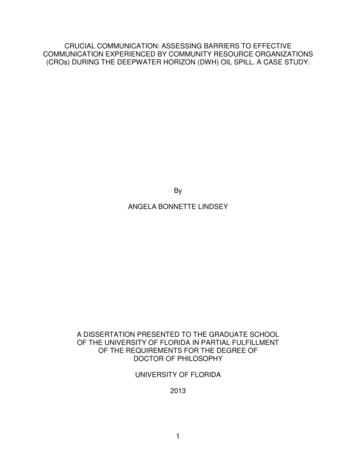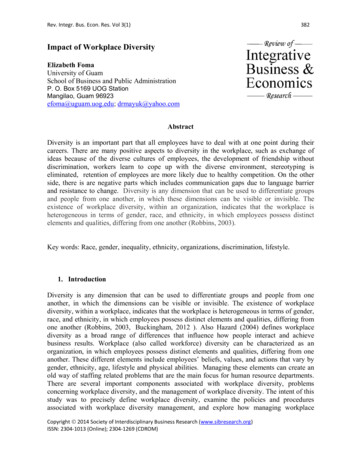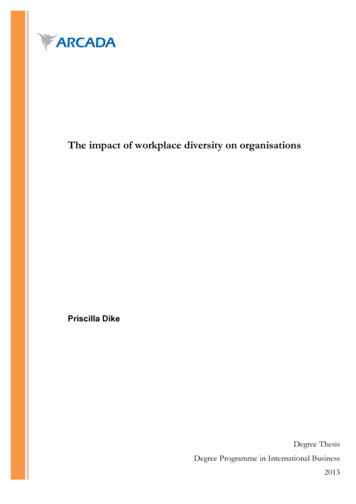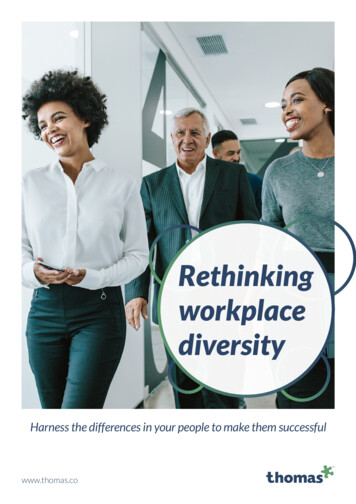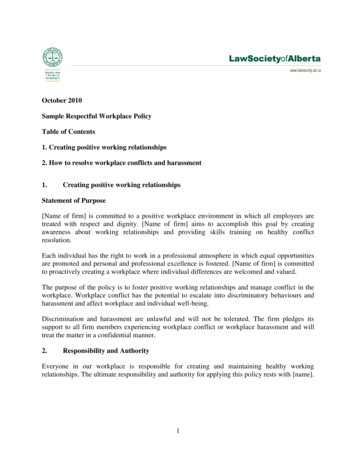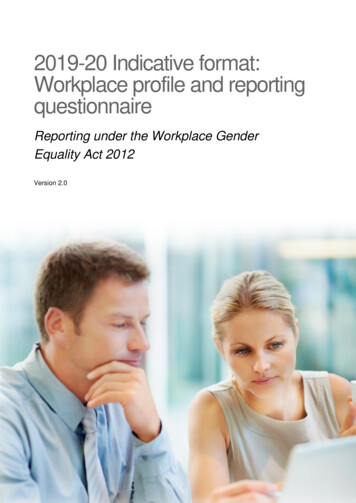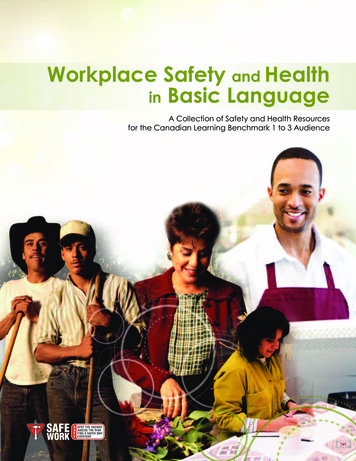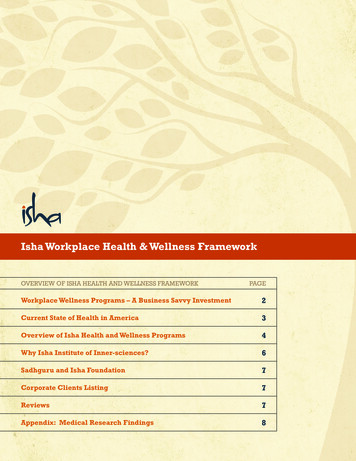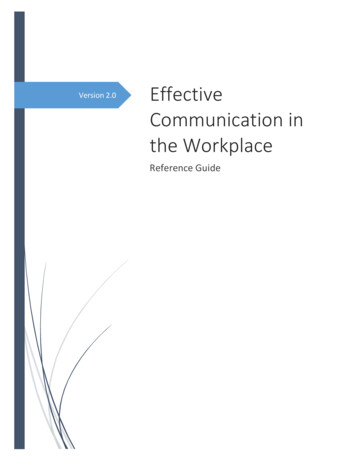
Transcription
Version 2.0EffectiveCommunication inthe WorkplaceReference Guide
What is Workplace Communication?Workplace communication is the process of exchanging information, both verbal andnon-verbal, within an organization. There are many means of communication. To be aneffective and valuable member of your workplace it is important that you become skilledin all the different methods of communication that are appropriate.Effective workplace communication ensures that organizational objectives are achieved.Workplace communication is tremendously important to organizations because itincreases productivity and efficiency. Ineffective workplace communication leads tocommunication gaps between employees, which causes confusion, wastes time, andreduces productivity. Misunderstandings that cause friction between people can beavoided by communicating effectively.For communication to occur it must pass from a sender to a receiver. This must occurirrespective of the form of communication.For communication to be effective it must be understood by the receiver and can beresponded to. This means that communication involves speaking, reading, listening,and reasoning skills.As communications pass from the source to the receiver there is plenty of opportunityfor its original meaning to change. Therefore listening, reasoning and feedback is animportant part of the process as it is an opportunity for the sender to make sure thereceiver has understood the message.The other consideration is the “noise” associated with the communication – what else ishappening, what are the distractions, the baggage etc. Noise can have a big impact onthe message the receiver decodes.Why is Effective Communication Important?1. Workplace communication improves productivity.2. Workplace communication can increase employee job satisfaction.3. Workplace communication can have a positive effect on absenteeism andturnover rates.Effective Communication in the Workplace1
How to Communicate in the WorkplaceCommunication in the workplace should occur in a way that responds positively toindividual differences. Consider the following: Value all individuals and treat them with respect, courtesy and sensitivity. Recognize cultural differences. Communicate in a way to develop and maintain positive relationships, trust andconfidence. Make an effort to use basic strategies to overcome communication barriers.The way that you communicate impacts your ability to get along with people and get thethings that you want/need done. Communication, whether verbal, written or visual canbe expressed in positive and negative ways. Individuals need to take feedback fromhow others interpret or perceive how they are communicating. Sometimes we can beperceived as aggressive even though it is not intended.When verbally communicating: Speak clearly and listen carefully to ensure information is understood. Ask questions and confirm the meaning of information to avoidmisunderstandings. Let others talk – a conversation is a two-way event at a minimum. Engage in difficult conversations when necessary – not saying something toavoid a difficult conversation usually makes things worse. Ensure the tone you use is open and non-confrontational and encouragefeedback.Effective Communication in the Workplace2
When communicating through email (or other written communication): Always read, then re-read an email before sending to check spelling, grammarand tone. Ensure that the content of the email is relevant and has an appropriate subjectheading. Ensure that contact details are appended to the email, so that those reading itcan contact the sender if required. Be polite, concise, use valid points and avoid lengthy ramblings. Don’t cc the email to anyone to whom it is not relevant. Avoid using email to discuss confidential information.The workplace is always a professional environment. This means that each type ofwritten communication has an expected professional standard. Some of the basicexpectations are that all written communication: Is simple and easy to understand. Is to the point and avoids unnecessary repetition or sentence “sprawl” (longrambling sentences). Avoids too many technical terms. Avoids slang, offensive language and discriminatory, racist or sexist language.Effective Communication in the Workplace3
How to Communicate with Clients & CustomersA client or customer is someone you provide a service to, complete a task for, or sell aproduct to outside of your organization. It is important that you are polite and use verbaland non-verbal communication to respond to the client or customer requests in anappropriate manner.Miscommunication can occur in many ways and create significant problems in theworkplace. What your client or customer “hears” as they listen to you can become amiscommunication based on: The words you are speaking being misinterpreted. Your body language sending a message that is different from your words. They are not listening to you properly or you are not listening to them properly.Here are some tips to help you communicate effectively with clients and customers: Speak clearly and accurately - speak at a rate your customer can understand youand provide correct information. Be open and non-judgmental - have an open posture; do not judge the way yourcustomer is dressed or presents himself or herself. Be respectful of your customers’ feelings - be professional and be aware of thewords you use. Use the customer’s name - this makes them feel special and valued. Unlearn your own bad habits - be aware of your own behaviour, always be selfassessing. Be aware of non-verbal messages - make sure you are displaying positive andappropriate body language at all times. Be interested in people - take a genuine interest in the customer’s needs. Thiswill build rapport and trust. Ask questions and be open to feedback – ask your customers open-endedquestions (not yes/no questions) to find out what they are looking for.Effective Communication in the Workplace4
References/Additional Information1. 20 Ways to Communicate Effectively with Your municate-effectively-in-theworkplace.html2. Workplaces That Work: Interpersonal aces-interpersonal.cfm3. Workplace Communication [Regional Skills Training Pty efault/files/content/WC%20Book%201.pdf4. Workplace Communication – Wikipediahttps://en.wikipedia.org/wiki/Workplace communicationEffective Communication in the Workplace5
As communications pass from the source to the receiver there is plenty of opportunity for its original meaning to change. Therefore listening, reasoning and feedback is an important part of the process as it is an opportunity for the sender to make sure the receiver has understood the message. The other consideration is the “noise” associated with the communication – what else is .


